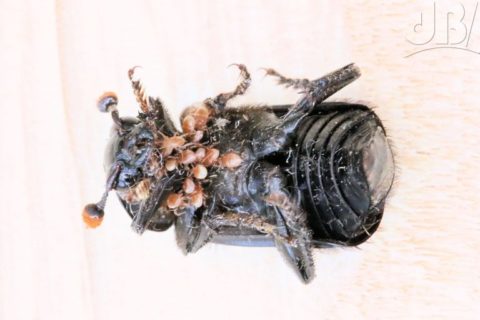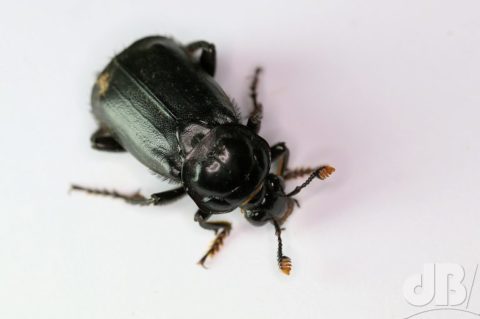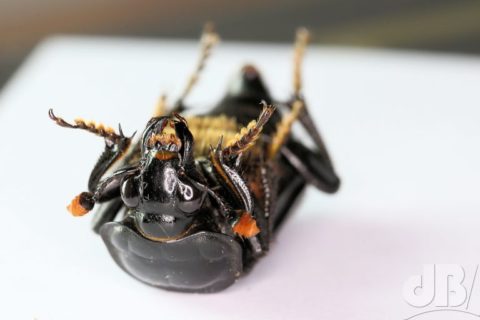UPDATE: 30 July 2019 – Another Sexton Beetle turned up this one doesn’t seem to have a vernacular name, it’s simply known as Necrophorus investigator.
ETYMOLOGY: A sexton was once a member of staff with responsibility for a church’s sacred objects and burying the dead. The word comes from the Old French segrestien, ultimately from Latin sacrista, from sacer, meaning sacred.
UPDATE: Sexton beetles often have mite passengers that eat fly eggs and maggots that are on the carrion the beetle buries. I asked about these and whether or not there is a parasitic mite too on the Moth Trap Intruders UK Facebook group, Malcolm Storey had this to say:
“The usual name given for the mite is Parasitus coleoptratorum which misleads people into thinking they’re parasitic (which people presumably thought when the name was proposed). This stage of the mite is the deutonymph. Apparently they’re “paraphages”. It’s the same small number of mite species on various dung and ground beetles. P. coleoptratorum is probably the commonest of the group. More info: Hyatt, K.H. 1980 Mites of the subfamily Parasitinae (Mesostigmata: Parasitidae) in the British Isles. Bull. Br. Mus. nat. Hist. (Zool.) 38(5): 237-378.”

I’ve mentioned burying beetles before. They’re a type of beetle it’s not a morbid hobby, by the way! These insects drag dead rodents and other animals underground, lay their eggs in them and the larvae as they hatch have a ready-meal to die for! The beetle also produces horrendously smelly sulfur compounds to mask the smell of death, you can think of it as a kind of flatulent Neutradol…
Anyway, in my moth trap morning of 20th March 2019, a specimen of the UK’s only all-black burying beetle, Nicrophorus humator, all-black carapace, that is, ignore the orange clubs on its death-seeking antennae. First Sexton Beetle of the year. This one had several pale-orange arachnid passengers, mites, I believe. Not sure whether they’re parasitic or synergistic.


